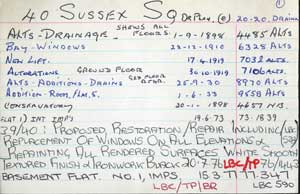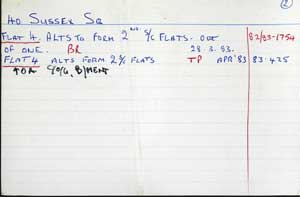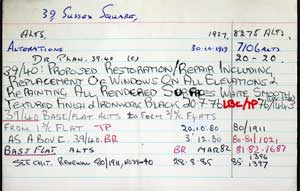The History of 40 Sussex Square
1 William Baines
2 Lady Sackville West
1 William Baines
William Baines, 1816-1901, a member of the Stock Exchange, was the first occupant of 40 Sussex Square. His name appears first in the street directories of 1856 and thereafter continuously for 45 years until 1901. At the 1891 census, he was 75 and widowed, living with 5 of his adult sons and daughters, supported by 5 servants.
On 16th January 1892 the Brighton Herald published some Recollections of Kemp Town sent to the paper by ‘an old resident’ of the Estate at that time. The article provoked a letter from another elderly former resident of Kemp Town, William Saunders,adding his memories of the estate. Some weeks later the first correspondent followed up with further recollections which were duly published. Among the residents recorded, William Baines’ profile uniquely fits the bill as our ‘old resident of Kemp Town’.
To read all the Recollections of Kemp Town find the Article by Andrew Doig on the Estate page
Andrew Doig 2017
2 Lady Sackville West
Willliam Baines
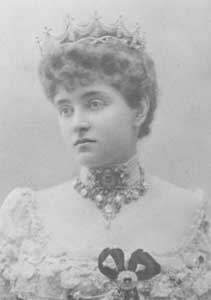
In 1918 Lady Sackville, recently estranged from her husband, bought two houses in Sussex Square which she converted into a palace for herself with the help of her friend, the architect, Edwin Lutyens.
Lady Victoria and Edwin Lutyens met and developed a relationship described as ‘closer than just friends’. The relationship was to greatly expand Lutyens contacts and commissions.
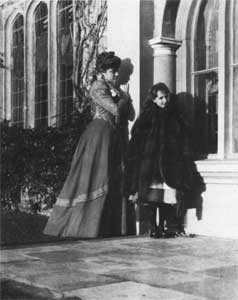
Lady Sackville’s daughter Vita Sackville-West says in a biography of her mother, that to her a “For Sale” sign outside a house read “Buy Me”. She bought and sold several houses, sometimes altering them before selling them, sometimes not. Indeed she bought 21 Lewes Crescent, also in 1918, and may or may not have lived there while her grand house at 40 Sussex Square was being made ready.
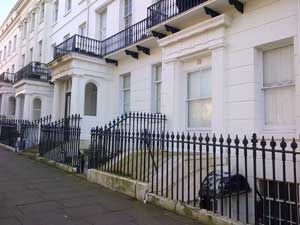
She finally moved into the re-modelled 39-40 Sussex Square in 1922 bringing with her seven vanloads of furniture from Knole. Her time here was short-lived as in 1923 she held a seven day sale to clear 40 Sussex Square. The sale included sculptures by Rodin and Epstein and a 42 stone diamond necklace. She moved on to White Lodge, now 40 The Cliff, Roedean, which again she had remodelled by ‘Ned’ Lutyens, as she called him.
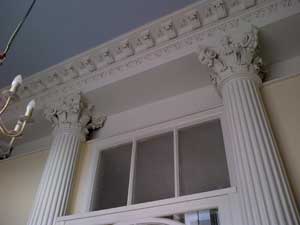
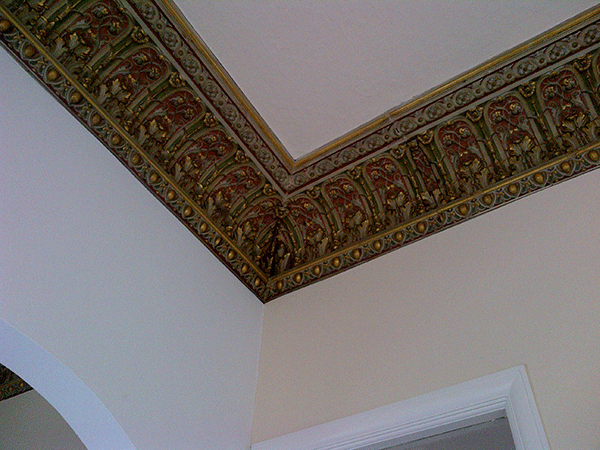
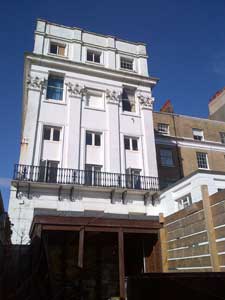
The Sussex Square palace was said to be an eccentric conversion unsuitable for her own use, let alone usable by others. Vita Sackville-West visited her mother at both 40 Sussex Square and at The White Lodge. In Vita’s memoires she recalls of Sussex Square that her mother bought ‘a hideous house at Brighton’ and spent £250,000 to remodel it into something worse. Her gardens were planted with tin and china flowers. She built a staircase of imitation books with joke titles and was delighted to see visitors try to pocket a half crown painted on her doorstep. For house wear her favourite garb was a cheap flannel nightgown, fastened by an emerald and diamond brooch, from which hung a sixpenny police whistle.
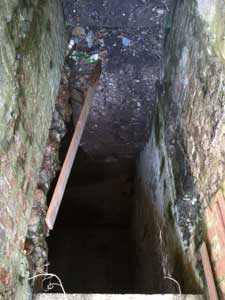
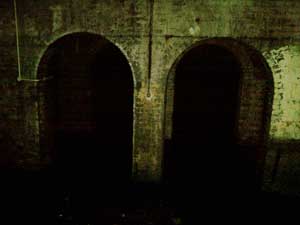
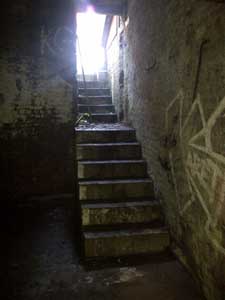

After she left Sussex Square in 1923, the house was converted to a block of flats, now known as Sussex Mansions. Lutyens’s plans for this palace and those of White Lodge may be amongst others by Lutyens in the RIBA library.( Copies of some of these plans can be viewed in ‘Further Reading’ on The Estate page. Editor )
The White Lodge was a contemporary house designed, by the architect of Roedean School, Sir John Simpson. Lutyens added new wings either side of this house, to include the covered outdoor space that Victoria required at her homes for eating outdoors, throughout the year. There is a photograph of her wrapped in furs, doing just that.
Victoria Sackville was one of 5 children of Lord Sackville and his Spanish dancer mistress, Pepita. Despite her illegitimacy, Queen Victoria allowed her, then aged 18, to act as hostess to her father when he was appointed as British Minister to Washington. There she became a society sensation attracting 25 offers of marriage from prominent American men, including the President.
After 7 years in America she returned to live with her father at, Knole. Determined not to be deprived of that home upon her father’s death she married her cousin, heir to Knole, and became Lady Sackville. Their marriage was not to last and broke down. By 1919 Victoria had left Knole for the last time.
Victoria was to continue to attract powerful and wealthy men and went on to entertain the interests of Sir John Murray Scott, J. P. Morgan, Sir Edwin Lutyens and William Waldorf Astor.
She came to be known to the public for her roles in two celebrated court cases, both reported on day-by-day in the popular press. The first was her illegitimate brother’s claim of 1909 to her husband’s title and to Knole. He tried to establish that their father, Lord Sackville, had secretly married Pepita and that he was therefore the legitimate heir. Bizarrely, Victoria had to testify against her brother’s suit that she and her siblings were indeed illegitimate. In this she was successful and saved her husband’s inheritance and her home at Knole.
Then she defended herself in court against allegations of undue influence over Sir John Murray Scott, in whose will she stood to inherit a vast fortune. He had left her £150,000 and valuable jewellery, furniture and works of art at his house at Rue Lafitte, Paris, estimated to be worth £350,000.
Several of the pieces of furniture that Sir John had wanted her to have were intended for display at Knole but by the time of his death, she had left Knole. Upon defeating his family’s claims of undue influence, she promptly called in a dealer and sold the Paris collection for a lump sum.
As the years passed Victoria became more rather than less difficult. In 1933 her butler issued her with a writ for non payment of wages, she quarrelled yet again with Vita and her husband Harold Nicholson whom she accused of siding with the unfortunate butler. She had more lawsuits than she could count and called her house Writs Hotel. Half-blind, bedridden, living in disorder, she stayed up half the night filling gaily bound notebooks with illegible maxims intended to be sold at Woolworth’s. A typical letter of her last days reels off to her daughter a fearful jeremiad of grievances, dark suspicions and comments on the latest trunk murder. In this letter she cries out: “Oh! how I admire that man Hitler!”
She was, said Kipling, “the most wonderful person I have ever met. It is outside all my experience, and of a type to which I know no duplicate.” She died alone in 1936 at White Lodge.
Andrew Doig

A quantity of papers and drawings relating to 40 Susses Square have been made available to Who’s Been Living in My House by architect Ewan of Savills, currently working on a project connected with the house. We are very grateful to him and to Councillor Robert Nemeth BHCC. Plans by Edwin Lutyens can be seen via the Estate page.
Other documents are shown below.
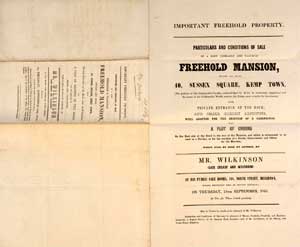
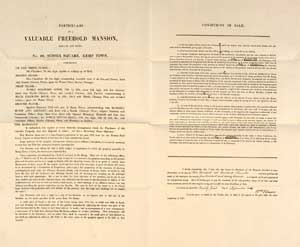
Record cards detailing building and maintenance for 39 and 40 Sussex Square from 1898
